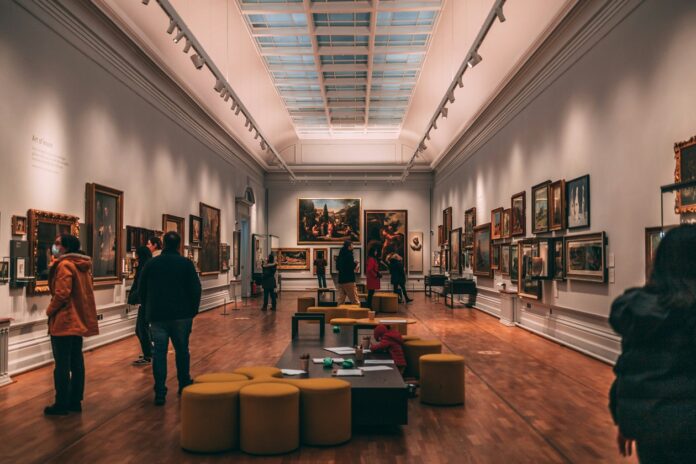Art galleries are places of beauty, culture, and creativity — but behind every masterpiece on display lies a careful system of protection. Temporary art exhibitions, often viewed as short-term showcases, are surprisingly effective in enhancing gallery security.
With evolving technology and rotating displays, they bring opportunities to strengthen surveillance, increase awareness, and improve the use of advanced artwork security sensors.
The Changing Landscape of Art Protection
Permanent collections tend to have static layouts, where staff and visitors become familiar with every corner. Over time, this familiarity can lead to complacency. Temporary exhibitions, however, break that pattern. They change layouts, lighting, and display methods, creating fresh challenges for both curators and security teams.
These frequent changes push galleries to re-evaluate and reinforce their security protocols. Each new setup demands new positioning of artwork security sensors, updated monitoring zones, and revised staff training — all of which keep security systems sharp and adaptive.
The Role of Artwork Security Sensors
Modern galleries now rely on advanced artwork security sensors to protect valuable pieces. These small yet powerful devices can detect movement, vibration, temperature fluctuations, and even unauthorized proximity. In temporary exhibitions, their flexibility becomes essential.
When an exhibition changes, so does the positioning of the artwork — from wall-mounted paintings to freestanding sculptures or glass displays. Sensors can be reconfigured for each setup, ensuring optimal protection for every piece. This adaptability allows security teams to monitor the environment in real time, detect suspicious activity, and alert staff instantly if a piece is touched or moved.
In short, the more often an exhibition changes, the more opportunities there are to test, refine, and improve the gallery’s entire network of sensors.
Increased Staff Awareness and Training
Each new exhibition brings a new installation phase — and that means security staff must adjust. This regular cycle keeps everyone alert. Rather than working in routine conditions, security personnel must stay aware of new layouts, entry points, and lighting effects that can affect visibility.
Many galleries use this as an opportunity for refresher training. They teach staff how to calibrate artwork security sensors, monitor sensor data effectively, and respond quickly to alerts. Over time, this constant engagement leads to a stronger, more prepared security team capable of handling unexpected incidents.
Visitor Flow and Crowd Management
Temporary exhibitions often attract different audiences — sometimes larger crowds, sometimes more niche groups. This variation helps galleries study visitor behavior and refine crowd management techniques. By observing how people move through the space, security experts can determine the most vulnerable areas for artwork.
For instance, if visitors tend to gather too closely around certain pieces, motion-based sensors can be set to trigger gentle alarms or silent notifications. The next exhibition can then use that data to improve display distance, layout design, and security coverage.
The Power of Technology and Data
One of the greatest advantages of modern artwork security sensors is their ability to collect valuable data. Over multiple temporary exhibitions, galleries accumulate information about patterns of movement, environmental changes, and potential risk areas. This data helps in long-term planning — determining which zones need extra monitoring, which materials require climate control, and which sensor types perform best in specific conditions.
Temporary exhibitions thus become a testing ground for innovation. Each installation offers a new chance to experiment with advanced tools like wireless vibration detectors, infrared motion sensors, and smart alarms that link directly to gallery security systems.
Building Trust with Artists and Lenders
When galleries borrow rare or high-value works from collectors or museums, security assurance is crucial. Temporary exhibitions allow institutions to demonstrate their advanced protection measures — particularly the use of artwork security sensors. Showing that each piece is individually monitored for movement, vibration, and environmental safety builds confidence among lenders, artists, and insurance providers.
This trust not only safeguards valuable art but also enhances the gallery’s reputation as a secure and professional venue for future collaborations.
Conclusion
Temporary art exhibitions do more than showcase new creativity — they strengthen the entire foundation of gallery security. By introducing dynamic environments, encouraging staff vigilance, and integrating flexible artwork security sensors, they ensure that every masterpiece remains safe in an ever-changing world.
In the end, security in the art world is not about standing still — it’s about adapting, learning, and protecting beauty through innovation.






